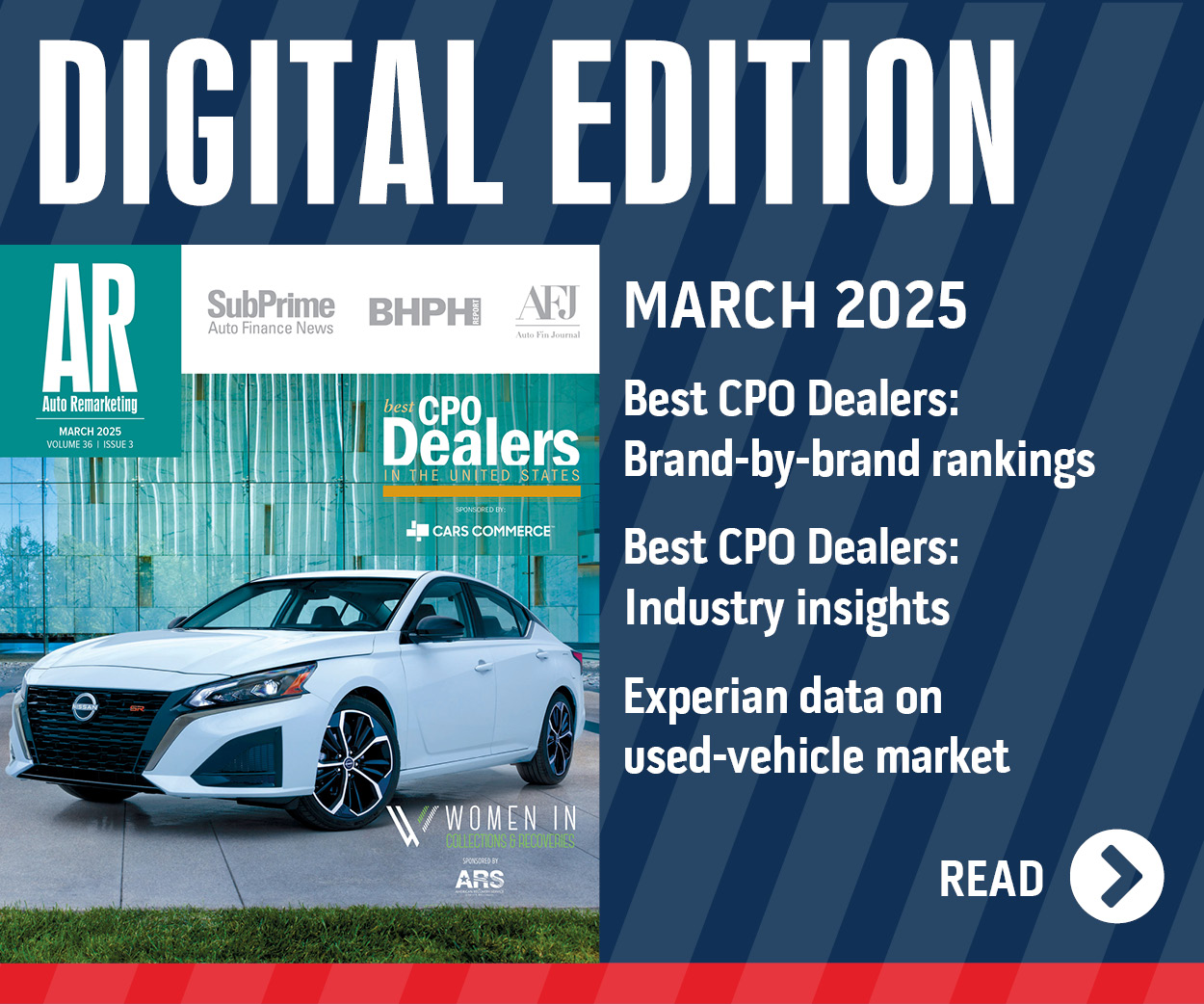Be mindful of ‘win-lose’ moment in car sales

Pay heed: For dealers, “the win-lose moment is online,” says LotLinx founder Len Short.
“Consumers are making their dealer destination visit decision when they see the car they want,” Short said in an emailed Q&A. “If dealers are not attracting those ready-to-buy consumers to their site, they will not be in the consideration set of which dealer the shopper visits to buy the car.
“The implication is clear: Gain those visits or be out of the money with that consumer.”
And if those shoppers do end up visiting a dealership, the majority aren’t going to be in the store’s customer relationship management system, Short said.
“But most will have researched the car they want, been to the dealer site, and be armed with info about the specific car they need,” he said. “Dealers must be ready to converse with an educated seller on the lot. And, get better at attracting those kinds of visits to meet their sales goals.”
‘Last Search’ & ‘Zero Moment of Truth’
Short has been a customer of West Marine boating products for quite some time. He said he had even been recruited to work on the company’s board of directors.
He recently was looking for a handheld GPS device. He read reviews, found the make/model he wanted and searched for it.
“Amazon hijacked me, and in a click, I was buying it from (Southern California’s iMarine),” Short said. “I know West Marine is in stock and right-priced, but rather than take a moment to enter WestMarine.com, the click path took me directly to Amazon, where I purchased.
“This is what Google calls the ‘Zero Moment of Truth,’ and where loyalties and brand are trumped by digital targeting,” he said. “Amazon dominated the ‘win-lose’ moment and got the order.”
Distributing VDP views
Short also notes how properly distributing vehicle detail page views can benefit dealers.
He explained the logistics behind that: “Assume that all VDP views on a dealer site have some cost. Even organic search, which is free, takes work to achieve. Paid traffic has a hard cost. If a hot-selling car has a lot of VDP views, especially from paid sources, there is likely a great deal of waste. Why pay ad dollars to promote a vehicle that does not need the support?
“On the other side, there are many cars that need promotion — longer days on lot, incentivized vehicles, etc. — to sell. If they don’t receive the proper volume of VDP views they will not sell as fast as they could, so that’s a missed opportunity,” he added. “LotLinx has a tool called the VIN View Optimizer. There a dealer can review all inventory by the volume of VDP views, by major traffic source providers.
“Dealers can also determine which specific VINs should be promoted and work with their digital analyst to create custom campaigns that put dollars on the selected vehicles. This eliminates waste and clears up missed opportunities.”
30 VDP views in 30 days is optimal
Speaking of VDPs, cars that receive 30 vehicle detail page views in 30 days sell more quickly than those that don’t.
That’s according to an analysis of VDP view distribution by LotLinx, which in looking at 483,715 VINs from 299 U.S. dealers found that 81 percent of cars on dealer lots sold after receiving 30 VDP views in 30 days or less — as compared to 65 percent of cars that received fewer than 30 VDPs in the same period.
“This means many cars on individual dealer lots do not receive enough VDP views to sell on time,” David Salinas, vice president of business analytics for LotLinx, said in a news release. “Dealers have the opportunity to optimize sales by assessing which cars need more VDP views, and then distributing views across their inventory to meet their established turn rate goals.”
LotLinx said the results highlight the important of distributing VDP views across dealers’ inventories in order to drive sales across the board.
Additional findings from the LotLinx report:
—72 percent of all VDP views went to just 25 percent of cars, leaving the large majority of VINs under-supported. This demonstrates an inefficient use of VDP views and a significant waste of advertising dollars.
—The remaining 75 percent of cars on lot received, on average, fewer than the 30 VDP views needed to boost sales. The bottom 25 percent averaged only one VDP view per VIN, too few for a sale to be realized.
“Dealers clearly know the value of VDP views in driving sales, but they have not had visibility into the distribution of VDP views until now,” Short said in a news release. “Too many cars get no support while others may be getting more than they need to sell. Basically, not all VDP views are equal.
“I encourage all dealers to take a closer look at their VDP view distribution. That examination will likely reveal the value of VIN-specific marketing campaigns, and the opportunity to reduce wasted ad spend.”
This data comes from the first in a quarterly series of data reports by LotLinx examining the effects of VDP view distribution.
Founded in 2012, LotLinx is a digital marketing company that uses proprietary technology to connect online auto shoppers who are nearing a purchase decision directly with dealer VDPs.
Staff Writer Sara Schweiger contributed to this report.

 View The Latest Edition
View The Latest Edition

